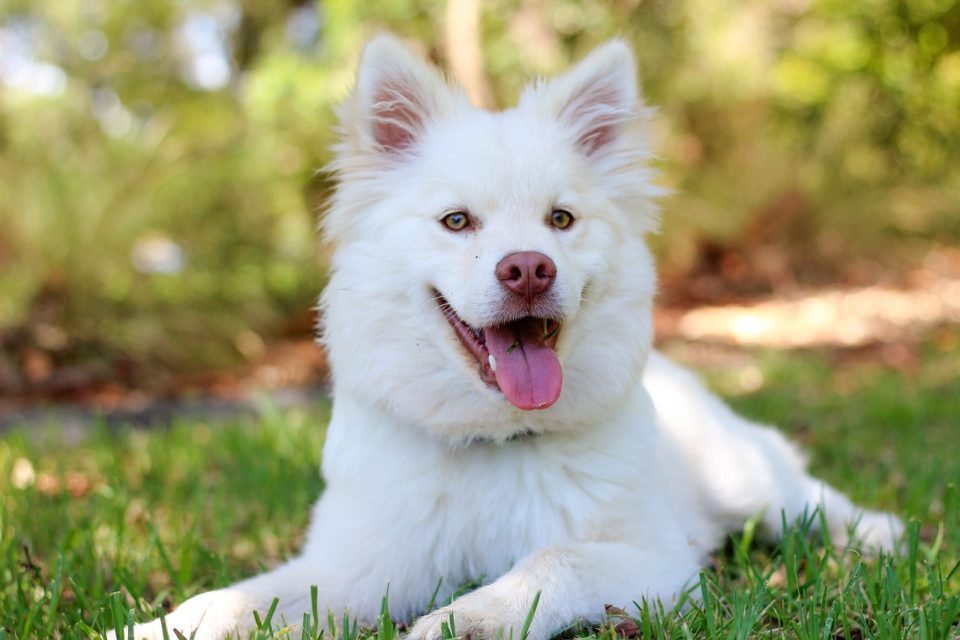Hello, my name is Valerie and I am the proud owner of Bentley who is a Clumberdoodle.
Of course, I always want to do my very best for my furry friend, and that includes keeping his teeth in good condition.
Did you know that dogs get plaque and tartar build-up exactly the same as we do?
Unfortunately, the same as we humans, our dogs also have a tendency towards gun disease. It is also possible that a dog can develop bleeding gums and sensitive teeth.
As this is always quite an issue with humans, I thought I would do some research into cleaning my dog’s teeth – and all that this involves.
My first question was whether I needed to clean his teeth, or could I leave this to nature to take care of.
So, Do I Need to Clean my Dog’s Teeth?
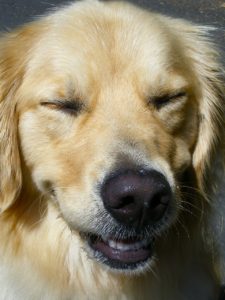 There are several very good reasons why we should brush our dog’s teeth. Possibly the most important reason is because a good set of teeth and gums goes a long way to improve health and lifespan.
There are several very good reasons why we should brush our dog’s teeth. Possibly the most important reason is because a good set of teeth and gums goes a long way to improve health and lifespan.
In the wild your dog would need his teeth to catch his prey, hold it firmly and then eat it.
For these to happen effectively he needs healthy fangs, incisors, premolars, and molars. For them to all work effectively, they need to be healthy.
If soft plaque is allowed to get hard it will turn into tartar which may be hard to remove. This can lead to gum disease.
Another reason for keeping Bentley’s teeth in good condition is that I know how painful toothache is. I can’t imagine how he would feel if he had toothache and could not tell me.
By regularly brushing his teeth and then paying a visit to the vet once or twice a year to do a dental check, I can be pretty sure that he will never suffer from this.
You should never need to try to floss between your dog’s teeth. Of course, if you have started to floss their teeth as a pup and they are used to it, then carry on.
Most dogs won’t stand for too much of flossing so a good regular brush will be fine.
Also, I checked out using an electric toothbrush. Again, if you have started this from an early age and your pooch accepts it buzzing around in his mouth, then that’s great.
Normally you will be able to scrub those teeth with one that is specially designed for dogs.
One thing I have found with Bentley is that because I have done this from when he was a pup, he is used to having his teeth cleaned and hardly objects at all.
So, try to start off when your dog is young, rather than leaving it until he is older and more set in his ways.
What Are the Benefits of Cleaning my Dog’s Teeth?
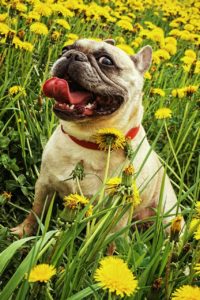 I found out this staggering statistic – 85% of all pets will have periodontal disease by the time they reach the age of three! Now that is not a nice thought, is it?
I found out this staggering statistic – 85% of all pets will have periodontal disease by the time they reach the age of three! Now that is not a nice thought, is it?
The benefits of healthy teeth and gums are good health and well-being for your pet. He will be happy because he is not in pain from decay and toothache.
Healthy teeth and gums contribute to a longer lifespan because there is less chance of infections in his mouth and then moving on to his body.
What is quite alarming are the results of not cleaning your dog’s teeth.
I found that regular cleaning removes visible tartar and plaque, and also bacteria under the gums, although you may need a professional to do below the gum line.
Healthy teeth mean that your pooch will keep his teeth longer and be able to enjoy his food for many years.
Dental disease will result in painful chewing, tooth loss, and bad breath. If left, this can lead to bacteria which may travel to his liver, kidneys, and heart.
If you regularly clean your dog’s teeth at home, you may need fewer professional cleanings, which mean that your pet is under anasthetic fewer times in his life.
About Periodontal Disease
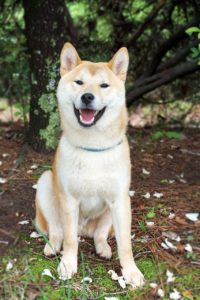 This starts when bacteria mix with food particles and form plaque on teeth.
This starts when bacteria mix with food particles and form plaque on teeth.
It only takes a few days before minerals in the dog’s saliva bond with the plaque to form tartar. This is what sticks to his teeth.
Bacteria start to grow under the gums and this can cause Gingivitis. This will lead to tooth loss.
Both gingivitis and periodontitis make up what is known as periodontal disease.
All the bacteria which is caused by this can travel in the bloodstream to infect other regions of the body such as kidneys, liver, and heart.
Having a professional clean done by your vet in the only way to remove the tartar under the gums. With care, gingivitis is reversible although periodontitis is not reversible.
However, even with a good routine at home, this can be kept under control.
The Big Question Now is How to Brush a Dog’s Teeth?
Buy Your Dog it’s Own Toothbrush
 Don’t be tempted to use your own spare toothbrush on your dog. It is made for you, not him.
Don’t be tempted to use your own spare toothbrush on your dog. It is made for you, not him.
It’s made to fit a human mouth instead of a canine mouth and will be far to big to even get into his mouth.
Treat your furry friend to his own toothbrush. Bentley has a set which fit over my finger like a sheath. It has rubber short bristles which resemble a child’s size toothbrush.
They’re fairly soft and not at all sharp so won’t scratch his gums. You can get them in various sizes from extra small to large for big breed dogs, so choose a suitable size.
You can get a dog toothbrush at any pet store or even your vet. Some are proper brushes with handles to hols, and others fit onto your finger, the choice is up to you, it is just what you feel comfortable with.
Get Your Dog it’s Own Toothpaste
Again, don’t be tempted to use your own toothpaste, no matter how healthy you think is it.
Remember that your pooch is going to swallow it all and that’s not good. Human toothpaste contains things which are not good for dogs.
Fluoride can be toxic for animals, you may find he starts to vomit or even have kidney problems.
Additionally, your toothpaste contains xylitol which can cause liver problems in dogs.
Start Slowly and From a Young Age
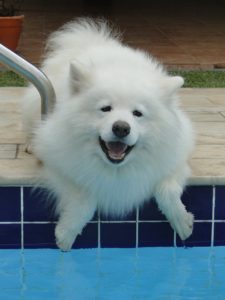 If you have gotten your dog as a pup, the ideal time to start getting him used to having his teeth brushed is when he is very young.
If you have gotten your dog as a pup, the ideal time to start getting him used to having his teeth brushed is when he is very young.
Even an older dog can be taught that this need not be a stressful time if you start slowly.
Choose a time when he is relaxed, not when he is itching to go for his walk. Ideally you should aim for after playtime, when he is somewhat tired and less likely to struggle with you.
I also found with Bentley the first few times I cleaned his teeth it helped to have a friend who could get behind him and stop him from backing away and then heading off behind the sofa!
I must say, though that it only took a few times before Bentley was quite comfortable with me opening his mouth by myself and brushing his teeth.
Touch Your Dog’s Mouth
I found with Bentley that it was a good idea to get him used to my hands around his mouth before I brought the toothbrush into sight.
As often as I could, especially when we were sitting quietly at night, I would just let my fingers wander down to is mouth, until soon he never even moved as I touched him around his muzzle area.
Once he was comfortable with being touched near his mouth, I put some toothpaste on my finger and he licked it off. We never looked back after that! It was easy to clean his teeth.
Brush a Few Teeth
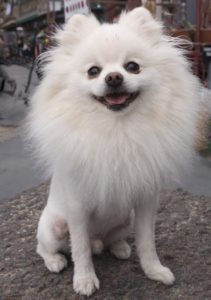 Start slowly, no point in getting your pooch all worked up over nothing.
Start slowly, no point in getting your pooch all worked up over nothing.
You may find that he lets you brush a few teeth with your finger at first. That’s ok, do whatever you have to do to get him used to the next step.
Be happy if you get the toothbrush onto his front teeth and not much further than that. It will get better the more you persevere.
Gently take hold of his upper lip and lift it to show his fangs and give them a brush.
Be gentle. I found talking to Bentley as I was doing this seemed to help him and he stayed still for me.
If you find any signs of aggression, stop at once and pick up the next day. This is something that your dog needs to be very comfortable with you doing.
It is not natural for him to have your fingers in his mouth and he needs to know you will not hurt him. Be patient, it will all happen in his own good time.
Then Reward Good Behaviour
If all has gone well and you have managed to brush a few teeth, make sure you reward your pooch with one of his favourite treats.
This will stick in his mind for the next time you brush his teeth and he will be more comfortable every time you do it.
Most importantly, I found that I had to be patient, instead of wanting to clean them all the first time.
Small steps that Bentley was comfortable with mean now he has no problems when I brush them.
Other Methods to Clean Your Dog’s Teeth…
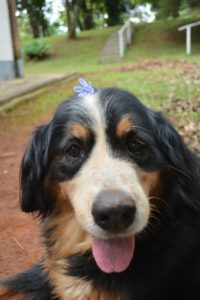 There are several other ways which will keep your dog’s teeth clean, although you should not substitute them instead of a good brushing.
There are several other ways which will keep your dog’s teeth clean, although you should not substitute them instead of a good brushing.
One thing which Bentley loves are his chew toys. Even the vet said that these are great to keep his teeth healthy and clean, as well as keeping his gums in good condition.
Many of them are designed specifically to do this. You should make sure that you never use hard things that could be broken and cut his mouth.
Dental chews are a great way to make your dog’s breath smell fresh, Bentley has one a day and they are minty flavoured, so he smells clean, just as if you used a minty mouthwash.
We have a butcher in the village who will gladly give us bones for our boy, for free.
He has a dog himself so knows to never give chicken bones, or in fact anything other than big juicy beef bones.
A good bone will go a long way to help keep your furry friend’s teeth clean and strong.
While these are all good ways to maintain good teeth and gums, nothing beats a good tooth brushing routine for a dog.
So, I’ve had a look at what toothpaste and brushes you can buy online. You can also get these at your own vet and pet shop.
The Best Dog Toothpaste!
1. Petrodex Enzymatic Toothpaste Dog Poultry Flavour
This is specially formulated for dogs to help control plaque. Additionally, it will keep your dog’s breath fresh smelling.
The toothpaste comes in a chicken flavour which will encourage your pooch to open his mouth for you, as it smells so good!
This is a non-foaming formula which does not require any rinsing – not that you would get a dog to rinse anyway!
They do state that with regular use, it will control plaque, and keep breathe smelling fresh.
2. Arm & Hammer Dog Dental Care Fresh Breath Kit for Dogs
This dental toothpaste is made with only natural ingredients and taste of chicken.
Arm & Hammer advocate that for first time users you put a little on a finger and rub along the gum line to get your pooch used to having a finger in his mouth.
They also say that for best results you should brush 2-3 times a week.
Because of the ingredients in this toothpaste (baking soda) it is perfectly safe even to use on small puppies so don’t be afraid of starting at an early age.
I have always known that baking soda whitens teeth, in fact I seem to remember using a baking soda toothpaste when I was young as well.
It is a natural whitening ingredient which also reduces tartar build-up.
3. CET Toothpaste
This is designed to be used for either dog or cat (let me know how cleaning the cat’s teeth work out!) but it is formulated to be safe for either animal.
The toothpaste comes in five different flavours, so you can find the one your dog likes the best and keep him happy.
The brush has soft bristles which will not harm gums of pups or older dogs.
4. Himalaya Complete Care Toothpaste – Simply Cinnamon
If you like cinnamon, you will love this flavour! It is tempting to use it myself!
The toothpaste if fluoride-free and smells faintly of pomegranate along with the cinnamon. Your dog’s breath will smell extra clean and fresh with this.
There are also no harsh abrasives in the toothpaste although it still foams well.
5. Oxyfresh Pet Dental Gel Toothpaste
Here’s another toothpaste which you can use on either dog or cat. It contains Aloe Vera which is designed to soothe sensitive or wounded gums.
There are no toxic ingredients or harsh chemicals in the paste, although it contains oxygene which will leave your dog’s breath sweet- smelling.
I think that this is the perfect toothpaste for a ‘picky’ dog, because it is flavourless and odourless. So, no matter what your picky dog thinks, this will taste of nothing when you clean his teeth.
6. Petrodex Enzymatic Toothpaste Dog Poultry Flavour
This poultry flavoured toothpaste helps to control tartar build-up and fights bad breath.
It is specially formulated for pets and smells delicious, so any dog who enjoys chicken meals will not have a problem tasting this.
And our favourite toothpaste…
7. HDP EZ Toothpaste for Dogs
It is the smell of this toothpaste that will drive you dippy!
It smells of vanilla mint, and I cannot think of anyone who would not like this and it also works as a freshener, so breath smells sweet.
The toothpaste is sugar-free and sweetened with Stevia, which will not harm your pooch in any way.
It is designed to reduce tartar build-up and make brushing an enjoyable experience.
The toothpaste is meant to maintain healthy teeth and gums, and with a delicious flavour it means that you can easily brush those teeth every other day. It gets my vote for the flavour, any day!
8. Ark Naturals Breath-less Brushless Toothpaste
This is for dogs who simply will not tolerate you sticking a toothbrush into their mouths.
It is basically a dental chew with a soft centre which contains natural ingredients such as alfalfa, cinnamon, cloves, and vanilla.
It is designed to prevent tartar build-up and bacteria which cause bad breath.
These chews are vet recommended and free from corn, soy, wheat and artificial flavours. Neither are there any artificial preservatives or colouring in them.
9. Mascota Pets Dog Toothbrush
It is a good idea to buy more than one toothbrush so that you always have a spare one or two if you need them. This is a pack of 10 so you will never be without one.
These are easy to use, I use them for Bentley and we have never had a problem with them.
You just put it over the end of the finger you want to use (I use my index finger, but whatever works for you) and place a small amount of toothpaste on the bristle area.
Also included are two long handled toothbrushes it you prefer not to get your fingers into the mouth.
This comes with a brush at either end, one larger and one smaller, so if you have a big breed dog, this will get right to the back of his teeth.
10. Fresh Breath Dental Spray for Dogs
Now this is similar to us chewing peppermint gum or using a mouthwash to freshen up our breath.
It’s a spray which will be a temporary fix for your dog’s bad breath.
It smells minty fresh and clean, and while it should not be used exclusively, it will still keep tartar build-up under control as long as you also brush his teeth.
The spray is flavoured with both peppermint and spearmint and smells great. You will also catch a faint smell of rosemary, which helps promote a healthy gut in your dog.
This is a great product to keep on hand, I have one in Bentley’s box.
Just for those little emergencies like when your mom shows up unexpectedly and you haven’t cleaned his teeth yet.
Just give him a quick spray and he’ll smell delightful for a few hours until you can do a regular brush.
Best Dog Toothpaste: Final Thoughts
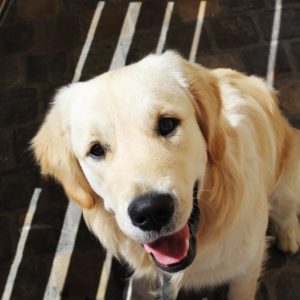 Well, I hope you’ve learned as much as I have about cleaning your dog’s teeth.
Well, I hope you’ve learned as much as I have about cleaning your dog’s teeth.
Some things that I did not know are that it is as important to sanitise your dog’s toothbrush as it is your own, and certainly to replace it as often as you do your own.
So, it’s a good idea to keep a set of spares around.
I also know that dry food is better than wet food as wet food tends to hang around in his mouth and cause decay.
Bentley has never had a problem with eating dry food, but I am more aware now after giving him wet food such as scrambled egg occasionally.
He also likes some yogurt in the morning, so I make an effort to get those teeth cleaned within a few hours after eating.
So, when you start to brush those teeth, do it slowly and gently in the beginning, be patient and don’t worry if at first you only manage to clean a few teeth.
Your dog will get used to having a toothbrush or your finger in his mouth, and before you know it, your pooch will have gloriously white teeth!
